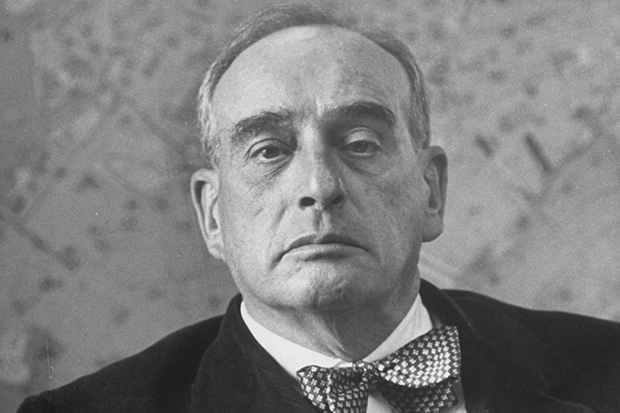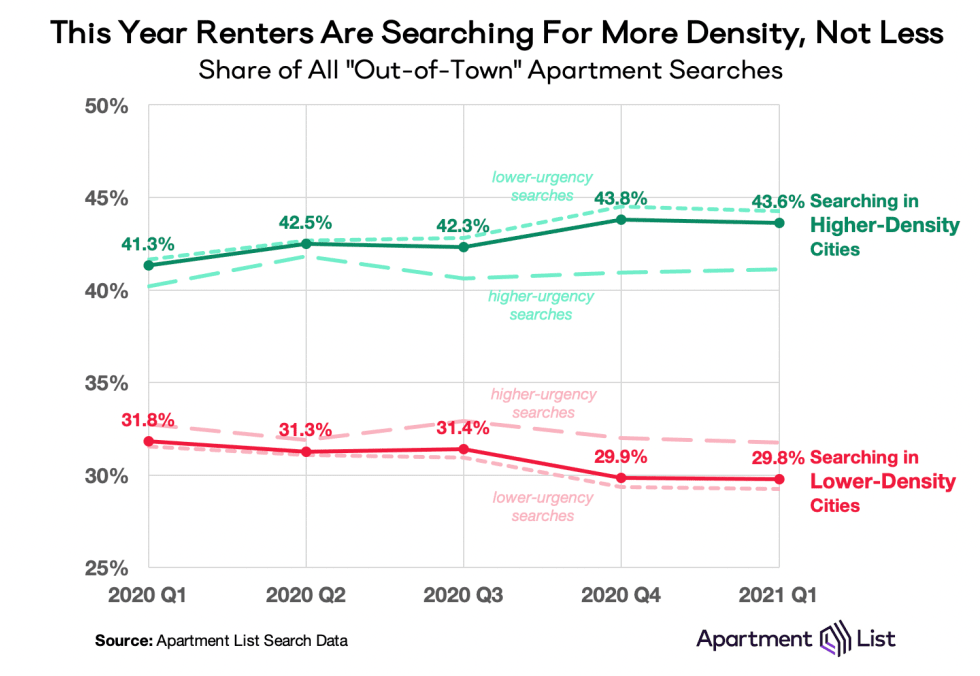What City Observatory this week
1. How ODOT destroyed Albina: Part 3 the Phantom Freeway. Even a freeway that never got built played a key role in demolishing part of Portland’s Albina neighborhood. In parts 1 and 2 of this series, we showed how construction of state highway 99W in 1951 and Interstate 5 in 1962 destroyed a substantial part of this predominantly Black neighborhood’s housing stock, and propelled its steady population and economic decline. In Part 3, we look at portion of this neighborhood flattened to accomodate a freeway that itself was never completed. The planned Prescott Freeway would have cut across North and Northeast Portland. Before it was cancelled, the Oregon Department of Transportation built a third of a mile stretch connected to the East End of the Fremont Bridge in Portland. The footprint of that freeway demolished most of the houses shown in the red bounded area on this 1962 aerial photo.
The neighborhood-killing effects of the freeway didn’t end with housing demolition and road construction; the flood of cars created by the freeway fundamentally altered the character of the neighborhood, making the surviving housing less desirable, and promoting a range of car-dependent uses, notably parking lots, that further erode a neighborhood’s residential viability.
2. Wholly Moses. A bill in the Oregon Legislature aims to revive two of the tricks power broker Robert Moses used to ram freeways through New York City decades ago. The bill, HB 3065, would authorize the Oregon Department of Transportation to start a series of freeway widening mega-projects, and also let it pledge tolls, and a wide array of other federal and state transportation revenues to repay bonds used to finance the projects.
The combination of driving stakes and selling bonds could lead to a situation where there’s never any future opportunity for elected legislators to question or rein in these projects. Moses discovered that bond covenants could be used to permanently encumber critical sources of revenue, like tolls. The provisions of HB 3065, as it is proposed to be amended, would essentially allow the Oregon Department of Transportation to similarly encumber all of Oregon’s future toll revenues to repay a series of vaguely defined freeway expansion projects. It’s an old stratagem that Oregon legislators should be wise to.
Must read
1. Cities will come back. Enrico Moretti, author of The New Geography of Jobs, has heard the claims that the Covid pandemic’s proof of concept of work-at-home means the end of cities as we know them. He isn’t having any of it. In an interview with Jerusalem Demsas of Vox, Moretti argues that neither the virus nor technology has permanently undone the key reason we gather together in cities: together, we’re more productive. Moretti’s work and that of other economists shows that agglomeration economies (economic gains from being close to other people with similar and complementary skills and knowledge) produce greater innovation, productivity and economic growth. These gains draw people and businesses to cities, and are the driving force powering superstar cities like San Francisco, but they operate in cities of all sizes. As Moretti concludes.
. . . the economic geography of employment after Covid will look a lot like before Covid. If you have to show up at the office three or four days a week, you still need to live in the metro area where your office is. The link between place of work and place of residence will be restored and people will flock back to places like the Bay Area or Seattle or New York or Boston for the same reason that they were flocking to these places before Covid.
Also, as we’ve noted at City Observatory, people are drawn to cities not just because of job opportunities, but because of the rich networks of social and consumption opportunities that abound in dense, successful cities. These agglomeration economies in production and consumption are likely to reassert their importance as the pandemic fades.
2. Climate Qualms about Biden’s Infrastructure Bill: Farhad Manjoo, writing at The New York Times, points out that highway departments are likely to use money targeted for road repairs to expand highway capacity, leading to more greenhouse gas emissions, rather than fewer:
. . . one of every five miles of roadway in America is rated in poor condition — but when given federal money for roads, states often spend a lot of it on expansion rather than repair. This is counterproductive. New roads are often justified as a way to reduce traffic, but that’s not how traffic works — new and expanded roads tend to encourage more driving, just making congestion worse. New roads also make for more maintenance, adding to the backlog of repairs.
There’s plenty of vitally important work to upgrade America’s transportation system, especially its sparse public transit networks, and deadly pedestrian and bike infrastructure. The Biden Administration’s policy statements are pointed in the right direction, calling generally for fixing things first, and addressing the historical damage caused to many neighborhoods, but the devil will be in thousands of administrative details.
3. The freeway battle is TransAtlantic. At City Observatory, we spend a lot of time looking at the climate effects of freeway expansion proposals in the US, but the issue is global. In the UK, where the nation has a long-standing official commitment to reduce its greenhouse gas emissions, environmental activists are pushing back against the apparent hypocrisy of the national government’s £27 billion proposal to expand “motorways” in England and Scotland. The Guardian reports on a legal challenge brought by the group Transport Action Network, arguing that the Ministry for Transport’s environmental assessment understates greenhouse gas emissions from the building spree by a factor of 100, by among other things, failing to account for the embodied emissions resulting from construction, and from induced demand. As the Guardian points out, two of the UK’s prominent transport experts, have testified against the government’s position.
Jillian Anable, professor of transport and energy at the University of Leeds, testified: “We are not aware of any calculation by the DfT of a cumulative figure for carbon emissions through to 2050, arising from all the road schemes funded by the RIS2 … and covering construction emissions as well as ongoing increases in emissions due to higher vehicle speeds and induced traffic.
Freeway opponents in Portland and in cities around the US are making similar challenges to the environmental analyses developed by state highway departments. It will be interesting to see how courts on both sides of the Atlantic weigh these arguments.
New Knowledge
The unfolding urban rebound. The analysts at ApartmentList.com have their finger on the pulse of the nation’s rental marketplace, and it’s one of the most important place to look for signs of urban life in a post-pandemic world. They track rental rates, and importantly, apartment search activity, across and within metro areas throughout the United States. While it was popular, especially in the early days of the Covid-19 pandemic, to predict an unending urban exodus, due to fears of density, the team at Apartment List were always a bit charry to that hypothesis.
Their latest take on the nation’s rental markets shows an unfolding urban rebound. Not only were the predictions of urban exodus overblown, but it appears that interest in big cities, and particularly in the denser portion of those cities never really waned. In their view, what we’ve seen is really “urban churn” rather than urban exodus. To be sure, its possible that the pandemic (and low interest rates) accelerated the movement of some people out of cities; but people are always moving in and out of cities, and in Apartment List’s view, there are lots more people looking to take the place of those who may have left.
That’s what they’re seeing in the data. In market after market, interest in apartments in dense central locations (primary cities) is outpacing interest in their surrounding suburbs, with search activity up consistently more, compared to a year ago in city neighborhoods. They also note that the decline in market rents in some cities, particularly superstars like San Francisco, Seattle and others, is likely to stimulate even more interest, as some who might not have looked in those cities for affordability reasons now searching there. In that way, ApartmentList reasons, the rental rate decline is at least partly self-correcting. They conclude:
. . . there has been significant speculation about what the pandemic would mean for the future of cities. Predictions of urban exodus felt intuitive, given that social distancing requirements put a pause on many of the activities that make city life vibrant, while at the same time, remote work had freed many Americans from needing to live close to their jobs. Despite this narrative, our search data show that big, dense cities are maintaining their allure even as some residents move away. . . . It is important to keep in mind that these data reflect search activity rather than complete moves, but we see clear evidence that interest in big cities has not waned . . . All in all, the “urban exodus” narrative seems to be one that we can close the door on.
In the News
Bloomberg CityLab included City Observatory’s analysis of the flaws in planning for Portland’s $800 million Rose Quarter Freeway widening project in its story about freeway fights in Houston, Milwaukee and Portland.
Streetsblog cited City Observatory’s reporting on the damage done to the historically Black Albina neighborhood by the construction of multiple state highways; damage that would be aggravated by widening I-5 at the Rose Quarter.




